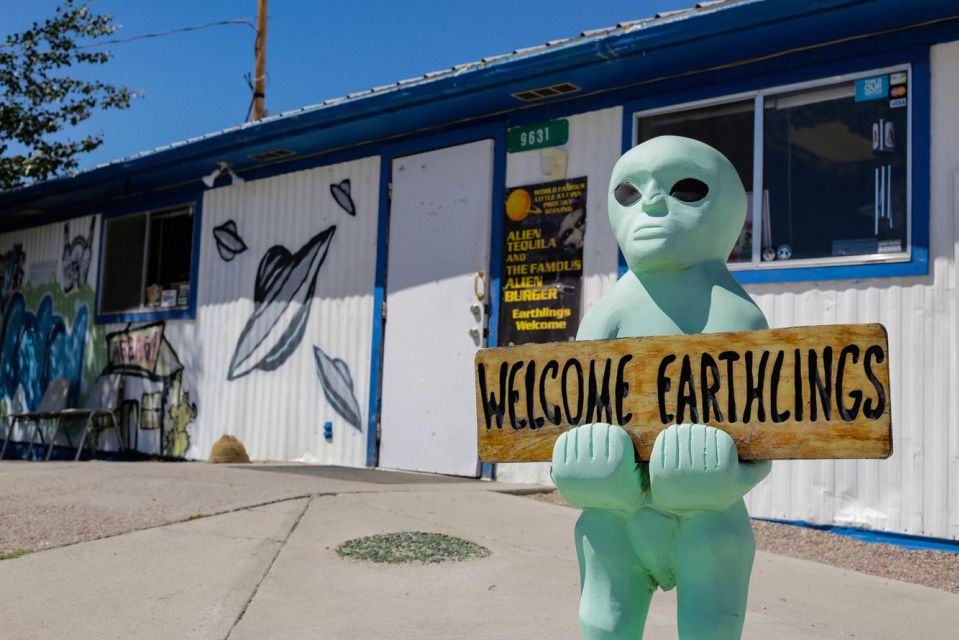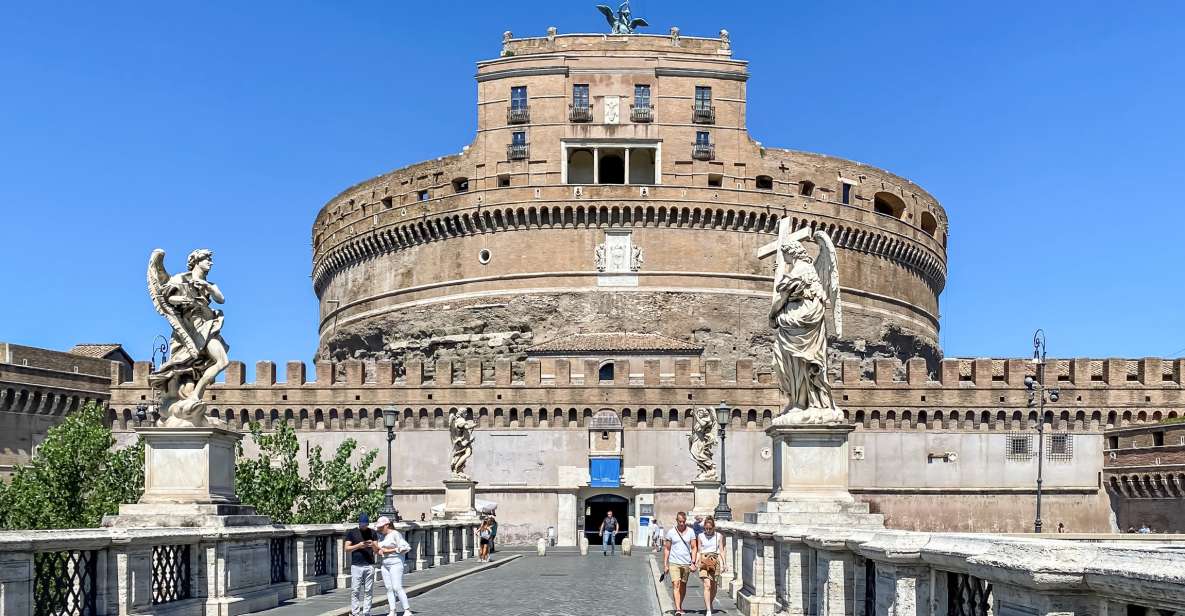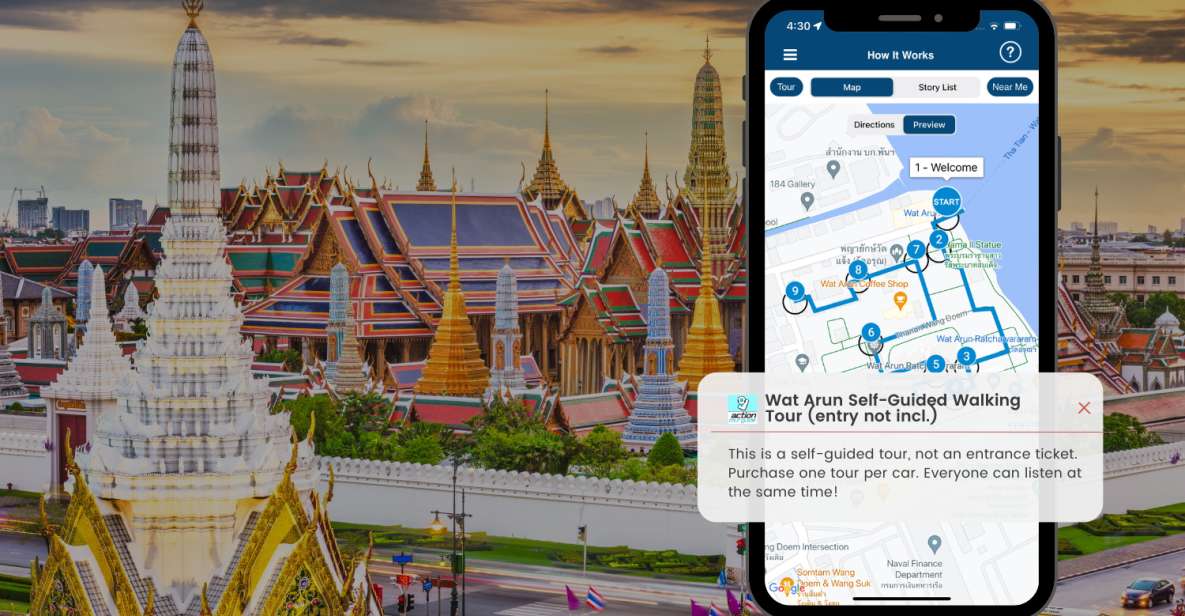The French Quarter in New Orleans is a captivating blend of history, culture, and resilience. Visitors can embark on a walking tour that delves into the iconic Cafe du Monde, the legacy of Sicilian immigrants, and the city’s remarkable ability to withstand the impacts of natural disasters. Along the way, they’ll uncover the architectural significance of the district and gain insights into the complex history of slavery that shaped the city’s cultural identity. Whether you’re a first-time explorer or a seasoned New Orleans enthusiast, this tour promises to unveil the intriguing stories that have made the French Quarter a beloved destination.
Key Points
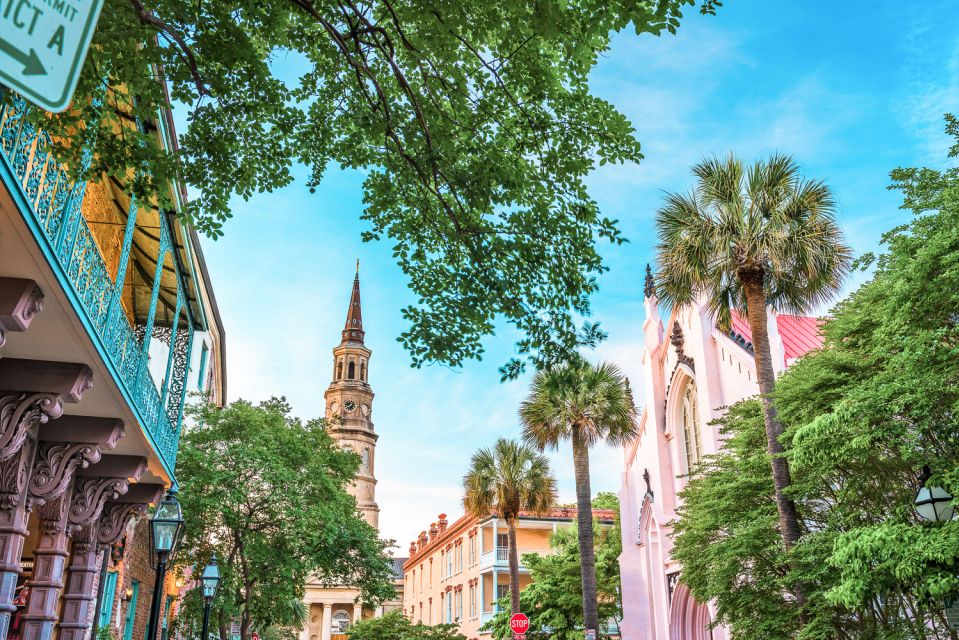
- The walking tour covers the iconic French Quarter, including visits to Cafe du Monde and Preservation Hall, highlighting the city’s history, architecture, and cultural legacy.
- The tour explores the impact of Hurricane Katrina on the city’s hurricane protection measures, including levees, floodwalls, and pump stations designed to safeguard residents and visitors.
- The tour discusses the city’s former slave markets and the influential Creole businessman Jean Francois Merieult, as well as the cultural legacy left by enslaved Africans and their descendants.
- The tour showcases the architectural significance of the Ursuline Convent, one of the oldest buildings in the Mississippi Delta, and the Pontalba Rowhouse, featuring distinctive cast-iron balconies.
- The tour highlights the resilient history of the French Quarter, including the Great Fire of 1788 that destroyed over 800 buildings, and the subsequent rebuilding efforts that shaped the area’s enduring legacy.
It's also worth checking out some other tours and experiences nearby.
Tour Overview
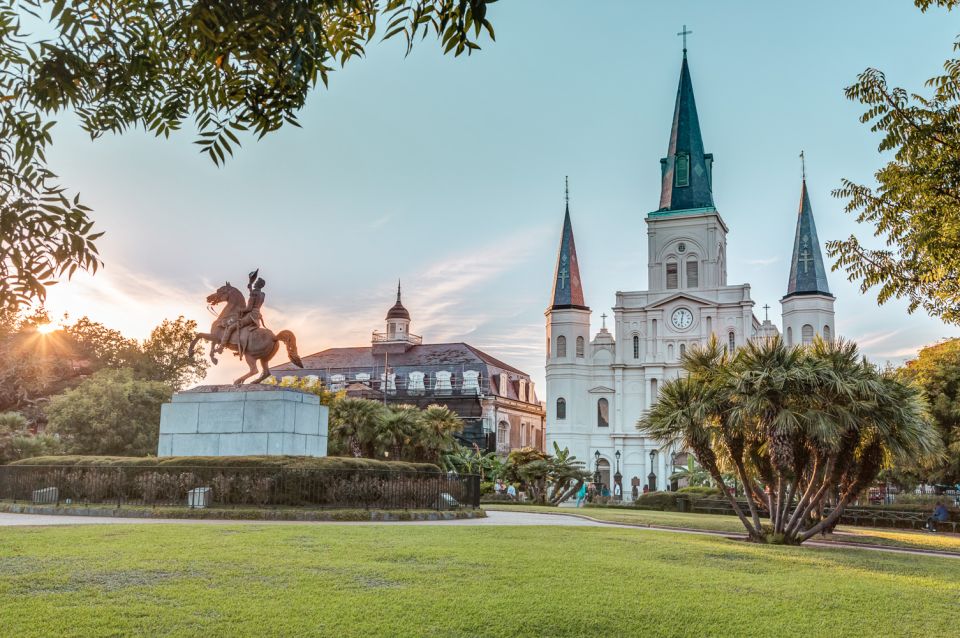
The 2-hour French Quarter Walking Tour begins at the former site of the Louisiana Welcome Center near Jackson Square, where a guided exploration of the historic neighborhood’s key landmarks and historical sites awaits.
Over the course of the tour, visitors will watch beignets being made at the iconic Cafe du Monde, learn about New Orleans’ hurricane protection and the impact of Hurricane Katrina, and visit the site of the Great Fire of 1788 and the former St. Louis Hotel and Exchange.
The tour also covers the role of Sicilian immigrants and the jazz musician Danny Barker, providing a well-rounded experience of the French Quarter’s rich history and cultural heritage.
Key Highlights
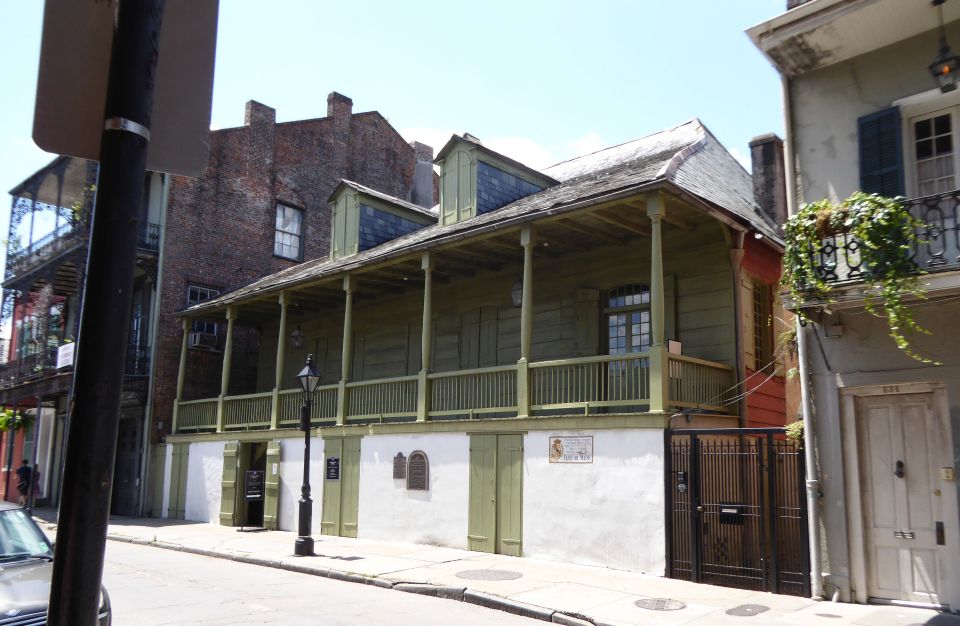
Throughout the tour, visitors get to watch beignets being freshly made at the iconic Cafe du Monde, a must-visit spot in the French Quarter.
The guide also shares insights into New Orleans’ protection against hurricanes and the impact of Hurricane Katrina on the city.
At the site of the Great Fire of 1788, they’ll learn about the former St. Louis Hotel and Exchange.
The tour explores the role of Sicilian immigrants and the jazz musician Danny Barker, providing a rich historical perspective on the French Quarter’s vibrant culture.
With a focus on key landmarks and historical sites, the tour offers a comprehensive introduction to this captivating neighborhood.
Slavery History
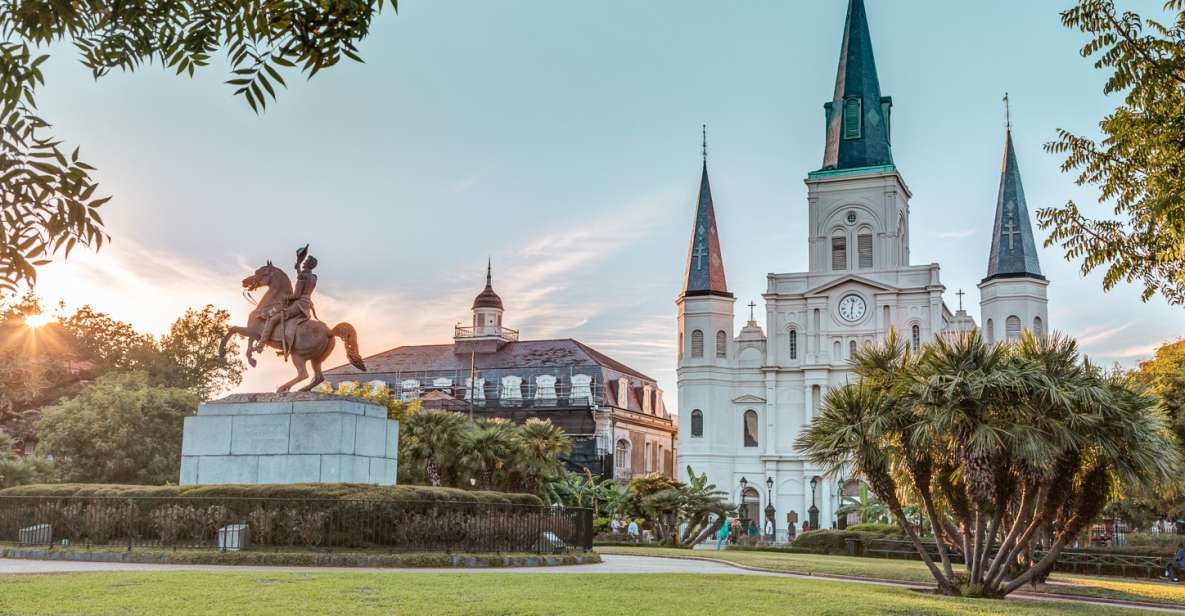
Along the tour, visitors learn about the city’s former slave markets and the influential Creole businessman Jean Francois Merieult, whose story illustrates the complex history of slavery in New Orleans. Merieult, a free man of color, owned several properties and businesses, including a slave market. This highlights how some Creoles participated in the institution of slavery, even as they themselves faced discrimination. The tour also explores Preservation Hall, a hub of traditional jazz music, which serves as a reminder of the cultural legacy left by enslaved Africans and their descendants.
| Slavery History Covered | Significance |
|---|---|
| Former slave markets | Illustrate complex history |
| Jean Francois Merieult | Influential Creole businessman |
| Preservation Hall | Cultural legacy of enslaved Africans |
Architectural and Historical Significance
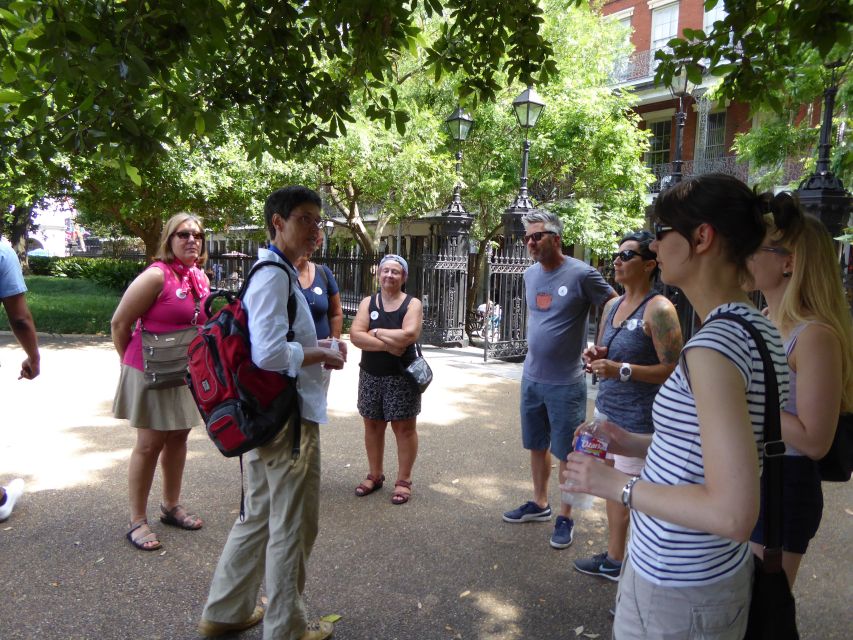
Along With the tour’s exploration of slavery history, visitors can also admire the architectural and historical significance of the French Quarter.
One of the oldest buildings in the Mississippi Delta, the Ursuline Convent, stands as a testament to the region’s rich cultural heritage. Constructed in the 18th century, this impressive structure provides a glimpse into the area’s colonial past.
Another highlight is the Pontalba Rowhouse, where visitors can learn the captivating story of its namesake, Madame de Pontalba. These historical landmarks offer a deeper understanding of the French Quarter’s enduring legacy and the diverse influences that have shaped its unique character over the centuries.
Protection Against Hurricanes
The tour also delves into how New Orleans safeguards itself against the ravages of hurricanes, a critical concern for the region. Visitors learn about the city’s extensive hurricane protection systems, including:
- Levees that line the Mississippi River and Lake Pontchartrain to prevent flooding.
- Floodwalls that serve as additional barriers against storm surges.
- Pump stations that can remove millions of gallons of water per minute during heavy rains.
- Early warning systems and evacuation plans to ensure the safety of residents and visitors.
These resilient measures were put to the test during Hurricane Katrina in 2005, and the tour highlights how the city has since strengthened its defenses to better withstand future extreme weather events.
Great Fire of 1788
Although the French Quarter is known for its vibrant culture and historic architecture, it has also endured its share of calamities, including the devastating Great Fire of 1788.
The blaze swept through the neighborhood, destroying over 800 buildings and killing several people. The fire’s origin remains unclear, but it’s believed to have started in a bakery and quickly spread due to the area’s wooden structures and strong winds.
The devastation was immense, and the French Quarter had to be rebuilt.
Today, visitors can explore the site of the former St. Louis Hotel and Exchange, which was destroyed in the fire but has since been rebuilt, offering a glimpse into the quarter’s resilient history.
Sicilian Immigrants and Jazz
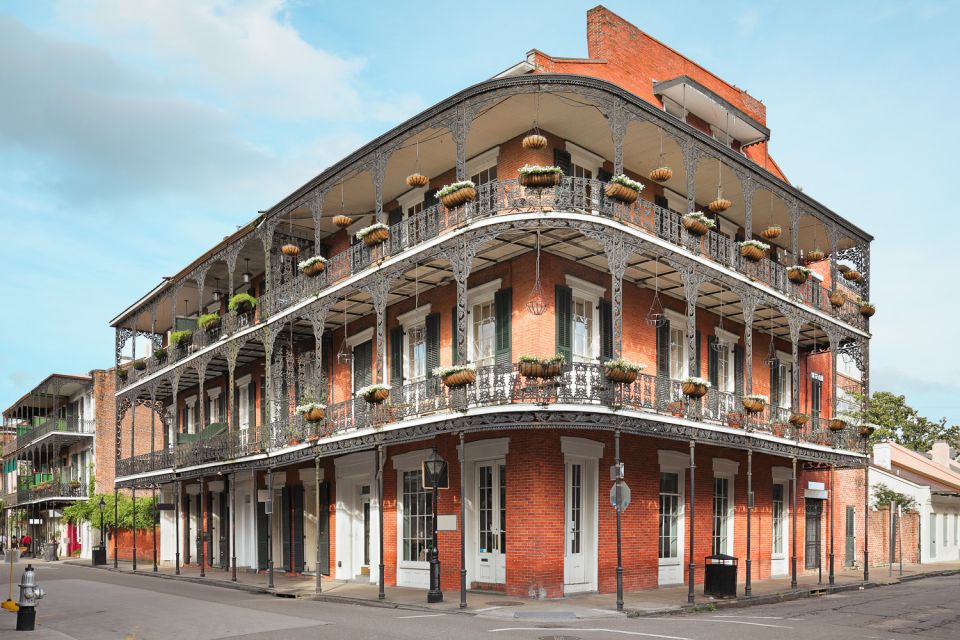
Sicilian immigrants played a crucial role in shaping the vibrant jazz scene of the French Quarter, with figures like jazz musician Danny Barker leaving an indelible mark on the neighborhood’s musical heritage.
These Italian newcomers brought their unique musical traditions and rhythms, which blended seamlessly with the African-American influences to create the distinctive sounds of New Orleans jazz.
Some key contributions include:
- The introduction of traditional Sicilian folk music and instruments like the mandolin.
- The hotel of jazz clubs and speakeasies that became hubs of performance and innovation.
- The mentorship and support of young, up-and-coming jazz artists.
- The preservation of the French Quarter’s unique cultural identity through musical expression.
Pontalba Rowhouse Story
One of the most iconic buildings in the French Quarter’s architectural landscape is the Pontalba Rowhouse, whose captivating story has captivated visitors for generations.
Built in the 1840s, the Pontalba Rowhouse was commissioned by Baroness Micaela Almonester de Pontalba, a wealthy Creole businesswoman.
The twin rowhouses, located along Jackson Square, feature distinctive cast-iron balconies and showcase the Baroness’ sophisticated European-inspired design.
Visitors can explore the Pontalba Building and learn about Madame de Pontalba’s fascinating life, including her tumultuous relationship with her father and her role in shaping the French Quarter’s iconic appearance.
Today, the Pontalba Rowhouse remains a beloved symbol of New Orleans’ rich cultural heritage and architectural legacy.
Here's a few more nearby tours and experiences we think you'll like.
Frequently Asked Questions
What Are the Start and End Locations of the Tour?
The tour starts at the former site of the Louisiana Welcome Center near Jackson Square and covers key landmarks throughout the historic French Quarter. The duration of the tour is 2 hours.
How Many Participants Are Allowed on the Tour?
The tour has no specific limit on the number of participants. Group sizes can vary, allowing for an intimate experience or larger group tours. Booking in advance is recommended to secure your spot on the walking tour.
Are There Any Age Restrictions for the Tour?
The tour doesn’t have any age restrictions. It’s suitable for all ages, though young children may require adult supervision. The tour is wheelchair accessible, making it accessible for visitors of all mobility levels.
Can We Take Photos During the Tour?
Guests are generally allowed to take photos during the tour, as long as they don’t disrupt the guide or other participants. Some sites may have restrictions, so it’s best to check with the tour operator beforehand.
Is Water or Snacks Provided During the Tour?
The tour does not provide water or snacks. Participants are encouraged to bring their own refreshments to stay hydrated and fueled during the 2-hour walking tour. Cafes and shops along the route offer opportunities to purchase food and drinks as needed.
Not for you? Here's more of our most recent tour reviews happening neaby
- Henleys Private Tours –Reviewers Say Best NOLA Private Tour
- Spooky Family-Friendly Ghost Tour in New Orleans
- New Orleans City and Cemetery Tour With Garden District Stroll
- New Orleans St. Louis Cemetery No. 3 Walking Tour
- New Orleans French Quarter Photo Shoot
- Self-Guided Scavenger Hunt by Jackson Square (English Only)
- New Orleans History and Sightseeing Small-Group Bike Tour
- New Orleans City Sightseeing Hop-On Hop-Off Bus Tour
- Private Airport Transfer From New Orleans
- Haunted Drunken History Tour From New Orleans
- New Orleans French Quarter and Garden District Bike Tour
- French Quarter Food Tour
- Haunted New Orleans Booze and Boos Ghost Walking Tour
- The Original Creole and Crescent Bike Tour
- New Orleans Transportation Service
Recap
The French Quarter Walking Tour in New Orleans offers a comprehensive exploration of the city’s rich history and cultural heritage.
Visitors can learn about the legacy of Sicilian immigrants, the impact of Hurricane Katrina, the architectural significance, and the city’s slavery history.
The tour provides a deep understanding of the French Quarter’s resilience and enduring significance, leaving a lasting impression on those who experience it.


